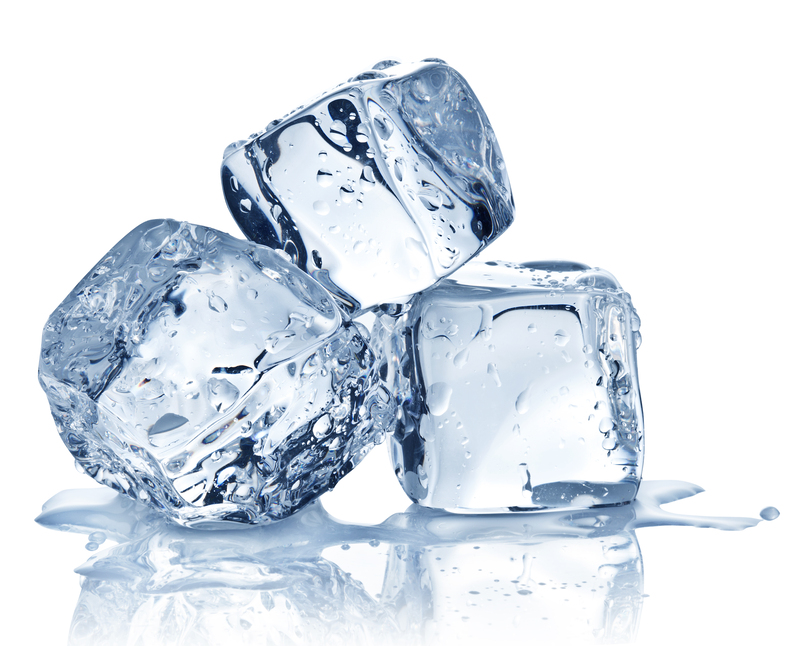A Sparkling Revolution: Enamel Oven Tray Grease Removal Made Easy
Posted on 19/09/2025
A Sparkling Revolution: Enamel Oven Tray Grease Removal Made Easy
Keeping your kitchen pristine is not only satisfying but also essential for healthy cooking. One of the most daunting household tasks is tackling the stubborn grease and grime on enamel oven trays. However, with the right tips and techniques, removing baked-on grease can become a straightforward, even enjoyable routine. This comprehensive guide exposes proven strategies and innovative hacks for enamel oven tray grease removal. Discover how to restore the original sparkle to your trays and usher a sparkling revolution into your kitchen!
Why Does Grease Stick to Enamel Oven Trays?
Enamel is revered for its heat-resistance, durability, and smooth, shiny finish. However, frequent exposure to fats, oils, and high temperatures during baking and roasting can leave sticky, persistent residues on your oven trays. Here are some reasons why grease is particularly troublesome:
- High Heat: Grease bakes onto enamel surfaces at high temperatures, making it harder to remove.
- Sugar Content: Caramelized sugars from roasted vegetables, desserts, or glazes can bond with the tray's glaze.
- Lack of Immediate Cleaning: Waiting too long to clean allows grease to set, turning it into a stubborn buildup.
- Porous Residue: Over time, minute cracks in the enamel can trap residues, making effective cleaning even more critical.

The Importance of Keeping Enamel Oven Trays Clean
Effective enamel oven tray grease removal is more than an aesthetic concern. Here's why regular cleaning should be at the top of your kitchen maintenance list:
- Prevents Smoke and Odors: Old grease burns and smokes, contaminating the flavor of your food.
- Reduces Bacteria and Molds: Grease traps moisture and can harbor bacteria over time.
- Extends the Life of Trays: Neglecting grease removal can damage the enamel, leading to chipping, discoloration, and rust.
- Improves Cooking Results: Residues on trays can affect heat distribution, leading to uneven cooking.
Common Myths About Oven Tray Grease Removal
Many home cooks believe that removing baked-on grease from enamel oven trays is impossible without harsh chemicals or hours of scrubbing. Below, we debunk some common myths:
- Myth 1: Only Commercial Products Work
Truth: Plenty of household ingredients, like baking soda, vinegar, and lemon juice, are highly effective at breaking down grease without damaging enamel. - Myth 2: Vigorous Scrubbing is Necessary
Truth: Soaking, gentle abrasion, and proper technique can lift grease without scratching the delicate enamel coating. - Myth 3: Once Discolored, It's Permanent
Truth: Persistent, yet gentle, cleaning methods can gradually restore enamel trays to their former shine.
The Science Behind Enamel Oven Tray Grease Removal
Understanding the interaction between grease, food residues, and the enamel surface is crucial. Enamel consists of a vitreous (glass-like) coating fused onto metal, offering both hardness and resistance to direct chemical attack. However, certain substances--like oils, burnt sugars, and acids--cling to it tenaciously.
Effective grease removal exploits the fact that:
- **Heat and alkaline solutions (like baking soda-based pastes) help emulsify and break down fats.**
- **Acidic solutions (vinegar or lemon juice) dissolve mineral deposits and some food residues, revealing the underlying pristine surface.**
- **Soaking softens hardened deposits, making mechanical removal vastly easier.**
Tools and Ingredients for Effortless Grease Removal
Before embarking on a grease removal mission, arm yourself with the right tools and supplies. Fortunately, most of these are easily found in any kitchen or local store:
- Baking soda (sodium bicarbonate)
- White vinegar
- Lemon juice
- Dish soap (degreasing formula)
- Non-scratch sponges
- Soft-bristle brush or old toothbrush
- Plastic scraper (never use metal as it can chip enamel)
- Rubber gloves for hand protection
Optional But Helpful:
- Oven cleaning paste (enamel-safe only)
- Microfiber cloth
- Pumice bar (confirm suitability for enamel surfaces)
Step-by-Step Guide: How to Remove Grease from Enamel Oven Trays
Ready for the revolution? Follow these expert-backed steps for grease removal from enamel trays that leaves your bakeware spotless and shining:
Step 1: Quick Pre-Clean
- Let the tray cool completely before cleaning. This prevents burns and protects the enamel from thermal shock.
- Using a paper towel, gently wipe away as much loose grease and crumbs as possible.
Step 2: Initial Soak
- Fill your sink or a large basin with hot water.
- Add a generous squirt of greasing-fighting dish soap.
- Submerge the tray and let it soak for at least 15-30 minutes. For extra-stubborn grime, soak overnight if possible.
Step 3: Physical Removal
- Gently scrub using a non-abrasive sponge or brush. Avoid steel wool or metal scrapers which can scratch enamel.
- Use a plastic scraper or old bank card for stubborn areas; apply gentle pressure.
Step 4: Baking Soda Paste for Deep Cleaning
- Mix three parts baking soda with one part water to make a paste.
- Spread the paste on greasy or stained areas and let it sit for 30-45 minutes.
- Spray or sprinkle a little vinegar over the paste; it will fizz, helping to break down stubborn residue.
- Scrub again with your non-scratch sponge, focusing on tough spots.
Step 5: Finishing Touches
- Rinse thoroughly with hot water to remove all cleaning residues.
- Dry with a soft towel or let air dry completely.
- For extra shine, buff the tray with a microfiber cloth before storing.
Advanced Tips for Removing Stubborn Baked-On Grease
- Boiling Water and Dish Soap: For really stubborn trays, set the tray on the stove (if safe), fill with water, add dish soap, and bring to a simmer. Let cool, then scrub.
- Lemon Juice & Salt: Sprinkle salt on stuck-on areas, squeeze lemon juice over, and let sit for 20 minutes. The acidity and abrasion help lift tough grease.
- Oven Cleaning Paste: Use an enamel-safe paste for last resorts. Apply as directed and rinse thoroughly.
Maintaining Enamel Oven Trays for Lasting Sparkle
Once your trays are spotless, it's worth maintaining their shine so grease removal remains a simple task. Here are some expert maintenance strategies:
- Clean After Every Use: Don't let grease and food sit and harden. Even a quick wipe with soapy water after every use prevents buildup.
- Use Baking Paper or Foil: Lining trays can significantly reduce direct contact with greasy food.
- Avoid Abrasive Tools: Always use utensils and sponges designed for non-stick or enamel surfaces.
- Periodic Deep Cleaning: Even if food doesn't stick, do a deep clean every few weeks for a lasting sparkling finish.
- Store Dry: Ensure trays are bone-dry before storage to prevent rust where enamel may have chipped.
What to Avoid When Cleaning Enamel Oven Trays
- Metal scrubbers or brushes - these can scratch, chip, or even crack the enamel surface.
- Harsh bleach or ammonia cleaners - over time, these can dull or discolour enamel.
- Sudden temperature changes - plunging a hot tray into cold water can cause enamel to crack.
- Leaving trays wet - always dry trays completely to avoid rust on exposed metal spots.
Eco-Friendly and Non-Toxic Grease Removal Alternatives
If you're seeking greener, safer ways for enamel oven tray grease removal, here are some natural, non-toxic solutions:
- Baking Soda & Vinegar: This classic combination creates a fizzing action that lifts grease without harsh chemicals.
- Lemon Juice: Naturally acidic, lemon breaks down grease and leaves a fresh scent.
- Salt Paste: Mix salt with a little water for non-toxic gentle abrasion--great for spot-cleaning stuck bits.
- Cornstarch: Sprinkle on greasy areas, let it absorb oils, then wipe away before a final wash.
Enamel Oven Tray Grease Removal Hacks You May Not Know
Sometimes, unconventional tips can deliver surprising results. Here are a few hacks tested by home chefs and cleaning enthusiasts:
- Dryer Sheets: Fill the tray with warm water, lay in a dryer sheet, and let sit overnight. Grease often wipes away with minimal effort (rinse very thoroughly afterward).
- Coca-Cola Soak: The acids in cola can break down tough buildup. Pour a shallow layer, let stand for a few hours, then scrub. (Rinse thoroughly!)
- Potato and Baking Soda: Slice a raw potato in half, dip the cut side in baking soda, and use as a natural scrubber for burnt-on patches.
- Hydrogen Peroxide & Baking Soda: For extreme cases, make a paste of hydrogen peroxide and baking soda, apply, and let sit for several hours, then scrub and rinse well.

Frequently Asked Questions (FAQ) about Enamel Oven Tray Grease Removal
- Is it safe to use vinegar on enamel trays?
Yes, distilled white vinegar is enamel-safe and effective against mineral or burnt-on deposits. Avoid concentrated acids. - Can baking soda scratch enamel?
Used gently, baking soda is a soft abrasive and typically does not scratch enamel. Avoid rubbing with excessive force. - What if my enamel tray is badly chipped?
Deep chips can expose metal, leading to rust and contamination. Retire damaged trays from cooking or use them with baking paper only. - How often should I deep-clean my trays?
For frequent bakers, a deep clean every 2-3 weeks is ideal. Casual users can clean monthly, depending on usage.
Conclusion: Embrace the Sparkling Revolution of Easy Enamel Tray Cleaning
Gone are the days of dreading greasy, blackened oven trays! With these science-based techniques, sustainable hacks, and expert tips, enamel oven tray grease removal truly is easy, effective, and safe for your valuable bakeware. Restore the joy to baking and roasting, knowing your trays will emerge sparkling after each use. Step into this sparkling revolution, and transform a once arduous chore into a routine pleasure, keeping your kitchen--and your meals--bright, healthy, and ready for anything.
Ready to try these tips at home? Share your own grease removal success stories below, and inspire others to join the sparkling revolution in kitchen hygiene!




